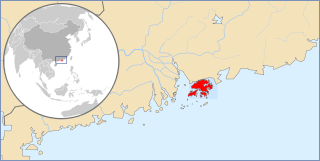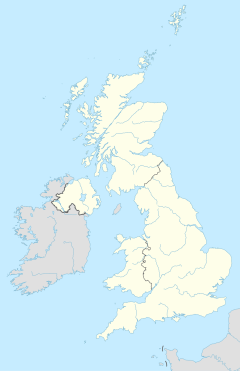Premium-rate telephone numbers are telephone numbers that charge callers higher price rates for select services, including information and entertainment. A portion of the call fees is paid to the service provider, allowing premium calls to be an additional source of revenue for businesses. Tech support, psychic hotlines, and adult chat lines are among the most popular kinds of premium-rate phone services. Other services include directory enquiries, weather forecasts, competitions and ratings televoting. Some businesses, e.g. low-cost airlines, and diplomatic missions, such as the US Embassy in London or the UK Embassy in Washington, have also used premium-rate phone numbers for calls from the general public.
A toll-free telephone number or freephone number is a telephone number that is billed for all arriving calls. For the calling party, a call to a toll-free number from a landline is free of charge. A toll-free number is identified by a dialing prefix similar to an area code. The specific service access varies by country.
A telephone numbering plan is a type of numbering scheme used in telecommunication to assign telephone numbers to subscriber telephones or other telephony endpoints. Telephone numbers are the addresses of participants in a telephone network, reachable by a system of destination code routing. Telephone numbering plans are defined in each of the administrative regions of the public switched telephone network (PSTN) and in private telephone networks.

In the United Kingdom, telephone numbers are administered by the Office of Communications (Ofcom). For this purpose, Ofcom established a telephone numbering plan, known as the National Telephone Numbering Plan, which is the system for assigning telephone numbers to subscriber stations.

The Australian telephone numbering plan describes the allocation of phone numbers in Australia. It has changed many times, the most recent major reorganisation by the Australian Communications & Media Authority taking place between 1994 and 1998.
In Argentina, area codes are two, three, or four digits long. Local customer numbers are six to eight figures long. The total number of digits is ten, for example, phone number (11) 1234-5678 for Buenos Aires is made up of a 2-digit area code number and an 8-digit subscriber's number, while (383) 123-4567 would be an example of a Catamarca number.

Telephone numbers in Hong Kong are mostly eight-digit. Fixed land line numbers start with 2 or 3, mobile (cellular) phone numbers with 5, 6, 7 or 9, pager numbers with 7 and forwarding service with 8. Since the end of 1989, there have been no area codes within Hong Kong.
The Big Number Change addressed various issues with the telephone dialling plan in the United Kingdom, during the late-1990s and early-2000s.

Numbers on the Irish telephone numbering plan are regulated and assigned to operators by ComReg.
Widespread UK telephone code misconceptions, in particular brought on by the Big Number Change in 2000, have been reported by regulator Ofcom since publication of a report it commissioned in 2004.

The dialling plan for mobile networks and new landline operators is closed; all subscriber numbers must be dialled in full. For landline numbers starting with 02, the dialling plan used to be open; the trunk digit and area code could be omitted if the caller was in the same area code as the callee. However, starting May 3, 1987 , all landline numbers must be dialled in full.

Telephone numbers in Malaysia are regulated by the Malaysian Communications and Multimedia Commission (MCMC).

The format of telephone numbers in Australia has changed over time to allow for the expansion of the subscriber base as technology has improved.
0191 is the UK telephone dialling code used by Newcastle, Durham, Sunderland and other nearby areas in the north east of England.

PhONEday was a change to the telephone dialling plan in the United Kingdom on 16 April 1995. It changed geographic area codes and some telephone numbers. In most areas, a "1" was added to the dialling code after the initial zero. In Bristol, Leeds, Leicester, Nottingham and Sheffield, the area codes were replaced with new codes and the subscriber numbers gained an extra digit. The PhONEday changes also made provision for new ranges of subscriber numbers in those five cities. A £16m advertising campaign, and an eight-month parallel period during which both old and new codes were active, preceded the change. PhONEday followed a change made in May 1990, when the old London area code 01 was released from use, permitting all United Kingdom geographic numbers to begin with this prefix. Originally planned in 1991 to take place in 1994, in 1992 the change was postponed until the Easter Sunday bank holiday in 1995.
National conventions for writing telephone numbers vary by country. While international standards exist in the form of recommendation E.123 by the sector ITU-T of the International Telecommunication Union (ITU), national telephone numbering plans define the format of telephone numbers assigned to telephones and similar communication endpoints.
Ranges for fictitious telephone numbers are common in most telephone numbering plans. One of the main reasons these ranges exist is to avoid accidentally using real phone numbers in movies and television programs because of viewers frequently calling the numbers used. In North America, the area served by the North American Numbering Plan (NANPA) system of area codes, fictitious telephone numbers are usually of the form (XXX) 555-xxxx. The use of 555 numbers in fiction, however, led a desire to assign some of them in the real world, and some of them are no longer suitable for use in fiction. Other areas have different fictitious telephone numbers.

Telephone numbers in Georgia consist of 9 digits and follow a closed numbering plan in which the initial 2 or 3 digits indicate the service or area code and the remaining 6 or 7 digits identify the subscriber.
Telephone numbers in the United Kingdom have a flexible structure that reflects their historical demands, starting from many independent companies through a nationalised near-monopoly, to a system that supports many different services, including cellular phones, which were not envisaged when the system was first built. Numbers evolved in a piecemeal fashion, with numbers initially allocated on an exchange-by-exchange basis for calls connected by manual operators. Subscriber numbers reflected demand in each area, with single digit telephone numbers in very rural areas and longer numbers in cities.










